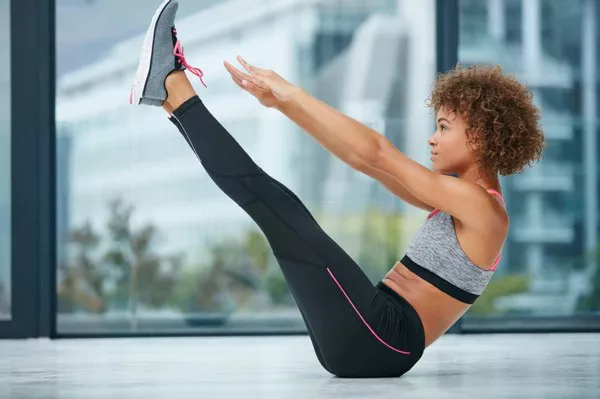Cycling is one of the most popular forms of aerobic exercise, offering an excellent way to improve cardiovascular health, build leg strength, and burn calories. Whether you love cycling outdoors on scenic routes or need a more practical solution for winter months or rainy days, riding a bike indoors can be a great alternative. It offers all the benefits of cycling without having to worry about traffic, weather conditions, or terrain.
But how can you make the most of indoor cycling? Whether you’re new to the concept or simply looking for tips to improve your indoor cycling routine, this article will guide you through everything you need to know about riding a bike indoors. From the equipment required to the best techniques and training plans, you’ll learn how to set up and enjoy indoor cycling at home, at the gym, or anywhere else that provides a stationary bike.
Types of Indoor Biking
When it comes to riding a bike indoors, there are different types of setups and bikes you can choose from. Let’s take a look at the most common indoor biking options available:
1. Stationary Bikes
Stationary bikes, often found at gyms or used at home, are designed specifically for indoor cycling. They come in several types:
- Upright Bikes: These resemble traditional road bikes, with pedals directly below the seat and handlebars positioned higher. They are great for general fitness and simulate the experience of outdoor cycling.
- Recumbent Bikes: On these bikes, the seat is lower, and you ride in a reclined position. The pedals are positioned in front of the body, which can be more comfortable for those with lower back or joint issues.
- Spin Bikes: These are designed for high-intensity workouts and often feature adjustable resistance, allowing you to mimic hill climbs or speed sprints. They are popular in group fitness classes.
2. Bike Trainers (for Outdoor Bikes)
If you already own a road or mountain bike, a bike trainer can transform your outdoor bike into an indoor one. These trainers hold your bike in place while allowing you to pedal as if you were riding on the road. There are different types of trainers available:
- Wheel-On Trainers: These attach to the rear wheel of your bike, which is placed in the trainer, providing a stationary ride.
- Direct Drive Trainers: These replace the rear wheel entirely by attaching the bike’s cassette directly to the trainer. This option offers a more realistic and smoother riding experience.
- Smart Trainers: These connect to apps or devices, allowing you to track your performance, participate in virtual cycling challenges, and adjust resistance automatically based on terrain or settings.
3. Smart Bikes
Smart bikes are fully integrated, high-tech stationary bikes designed to simulate outdoor cycling as closely as possible. These bikes connect to apps and allow you to engage in virtual rides through platforms like Zwift, Peloton, or Sufferfest. They often come with built-in resistance and tracking features for advanced riders.
Benefits of Indoor Cycling
Riding a bike indoors can offer a variety of benefits, making it an excellent choice for fitness enthusiasts of all levels. Let’s explore some of the main advantages:
1. Convenience and Flexibility
One of the biggest benefits of indoor cycling is that you can ride your bike anytime, no matter the weather or time of day. You don’t need to worry about the cold, rain, or snow, and you can even watch your favorite shows or listen to music while cycling indoors.
- Perfect for Bad Weather: Rain, snow, and extreme heat can all make outdoor cycling uncomfortable or unsafe. With indoor cycling, you’re free to ride no matter what the weather is like outside.
- Time-Saving: When cycling indoors, there’s no need to prepare for outdoor conditions or travel to a specific location. You can easily hop on your bike and start pedaling whenever you find the time.
2. Improved Cardiovascular Health
Indoor cycling offers excellent cardiovascular benefits. The continuous movement and steady pace of cycling work your heart and lungs, improving your endurance and overall fitness levels. Regular indoor cycling can:
- Boost Heart Health: Cycling strengthens the heart muscle, lowers blood pressure, and improves blood circulation.
- Increase Lung Capacity: Regular cycling increases your ability to take in oxygen, boosting overall lung function and endurance.
3. Low-Impact Exercise
Unlike running or other high-impact activities, cycling is a low-impact exercise, meaning it’s easier on your joints and muscles. Indoor cycling can:
- Reduce Joint Strain: The smooth, circular motion of pedaling minimizes stress on your knees, hips, and ankles, making it a great choice for individuals with joint problems or those recovering from an injury.
- Help with Rehabilitation: Cycling can be a part of a rehabilitation program after an injury, as it provides gentle yet effective movement that encourages muscle healing without placing too much strain on the body.
4. Weight Loss and Muscle Toning
Indoor cycling is an excellent exercise for burning calories and losing weight. A high-intensity workout can burn anywhere from 400 to 600 calories per hour, depending on the intensity and resistance levels. Additionally, cycling tones your legs, glutes, and core muscles, helping to build lean muscle.
5. Mental Well-Being
Like other forms of cardiovascular exercise, indoor cycling can boost mood and help reduce stress. The release of endorphins during exercise helps to improve your mental state, making indoor cycling an effective way to combat anxiety, depression, and other mood disorders.
Setting Up for Indoor Cycling
Now that you know why indoor cycling is beneficial, let’s look at how you can set up your indoor cycling experience at home or at the gym. Here’s everything you’ll need:
1. Choose the Right Bike or Trainer
- If You’re Using a Stationary Bike: Ensure the bike is adjustable to fit your body comfortably. The seat height should allow for a slight bend in your knee when the pedal is at the lowest point, and the handlebars should be at a height that feels comfortable.
- If You’re Using a Bike Trainer: Ensure your outdoor bike is compatible with the trainer. Some trainers are designed for specific types of bikes (road bikes, mountain bikes, etc.), so check the specifications before purchasing.
2. Set Up Your Space
You don’t need a lot of space to ride a bike indoors, but you’ll want to make sure your area is comfortable and safe. Here are a few things to consider:
- Ventilation: Indoor cycling can be intense, so it’s important to have good airflow in the room. Consider setting up near an open window or using a fan to keep the air circulating.
- Flooring: If you’re using a stationary bike, consider placing it on a mat or rug to protect your floor and absorb vibrations. If you’re using a bike trainer, you may want to place your bike on a mat to catch any sweat.
- Entertainment: Many people enjoy indoor cycling with entertainment, so consider setting up a TV, tablet, or music system to keep yourself engaged during your ride.
- Hydration: Always have water nearby to stay hydrated during your workout.
3. Gear Up
While indoor cycling doesn’t require much equipment, a few accessories can make your ride more comfortable and effective:
- Cycling Shoes: If your bike has clipless pedals, invest in cycling shoes that can clip into the pedals. This helps improve pedaling efficiency and can reduce strain on your knees.
- Comfortable Clothing: Wear moisture-wicking clothing that will keep you dry and comfortable during your ride. Cycling shorts or padded shorts can also help prevent discomfort during longer sessions.
- Heart Rate Monitor: If you’re focused on tracking your fitness goals, consider using a heart rate monitor to ensure you’re working within your desired intensity zone.
4. Set Goals and Track Progress
It’s important to have specific fitness goals when starting an indoor cycling routine. Whether you’re aiming to improve endurance, lose weight, or increase your cycling speed, tracking your progress will keep you motivated.
- Start Slow: If you’re new to cycling, begin with shorter sessions (20-30 minutes) and gradually increase the duration and intensity over time.
- Use Apps: Many indoor cycling setups come with apps or built-in programs that offer structured workouts, virtual rides, and performance tracking. These apps can provide extra motivation and help you track calories burned, heart rate, and distance covered.
5. Stay Consistent
To see the best results from indoor cycling, consistency is key. Aim to cycle at least 3-4 times a week for 30-45 minutes per session. Gradually increase the intensity as you build strength and endurance.
Indoor Cycling Workouts and Training Plans
Indoor cycling can be both fun and challenging, and you can mix up your workout routines to keep things exciting. Here are some workout ideas to get you started:
1. Basic Endurance Ride
For a low-intensity session, aim for 30-45 minutes at a moderate pace. Focus on maintaining a steady cadence and light resistance. This workout is perfect for building endurance over time.
2. Interval Training
Interval training is a great way to increase your cardiovascular fitness. Alternate between periods of high-intensity cycling (90-100% effort) for 1-2 minutes, followed by 1-2 minutes of low-intensity cycling to recover. Repeat this cycle for 20-30 minutes.
3. Hill Climbs
Increase the resistance to simulate cycling uphill. Alternate between 2-3 minutes of high-resistance climbing, followed by 2 minutes of easy pedaling for recovery. This workout helps strengthen your legs and improve stamina.
4. HIIT (High-Intensity Interval Training)
For an intense, calorie-burning workout, perform
short bursts of maximum effort for 30 seconds, followed by 30 seconds of rest. Repeat for 15-20 minutes. HIIT workouts are great for boosting metabolism and improving overall fitness.
Conclusion
Indoor cycling is a fantastic way to stay fit, improve cardiovascular health, and enjoy all the benefits of cycling without having to leave the comfort of your home or the gym. With the right equipment, space, and workout routine, you can create an enjoyable and effective indoor cycling experience. Whether you’re using a stationary bike, bike trainer, or smart bike, consistency and dedication will help you achieve your fitness goals and enjoy the ride!
Related Topics































